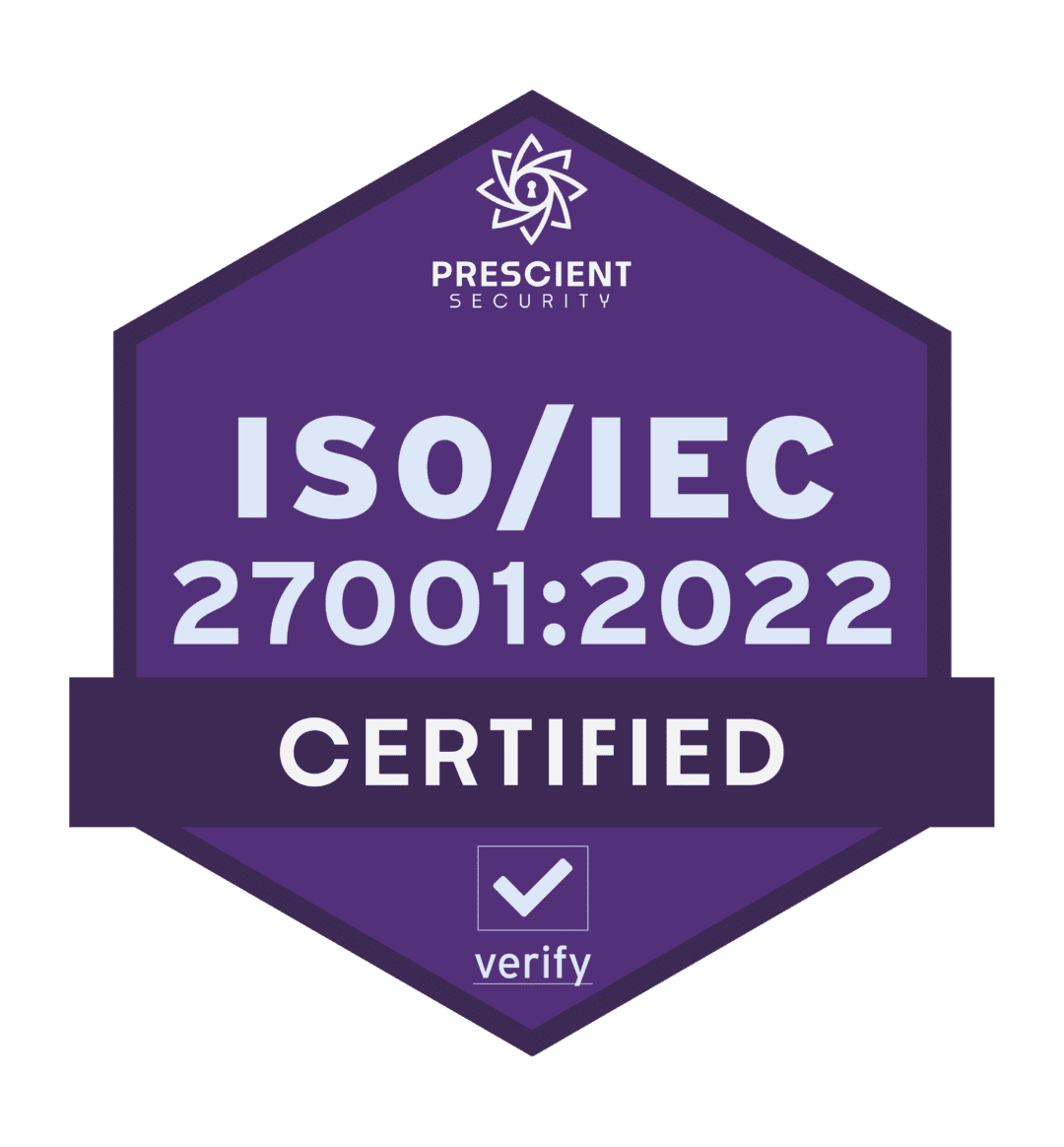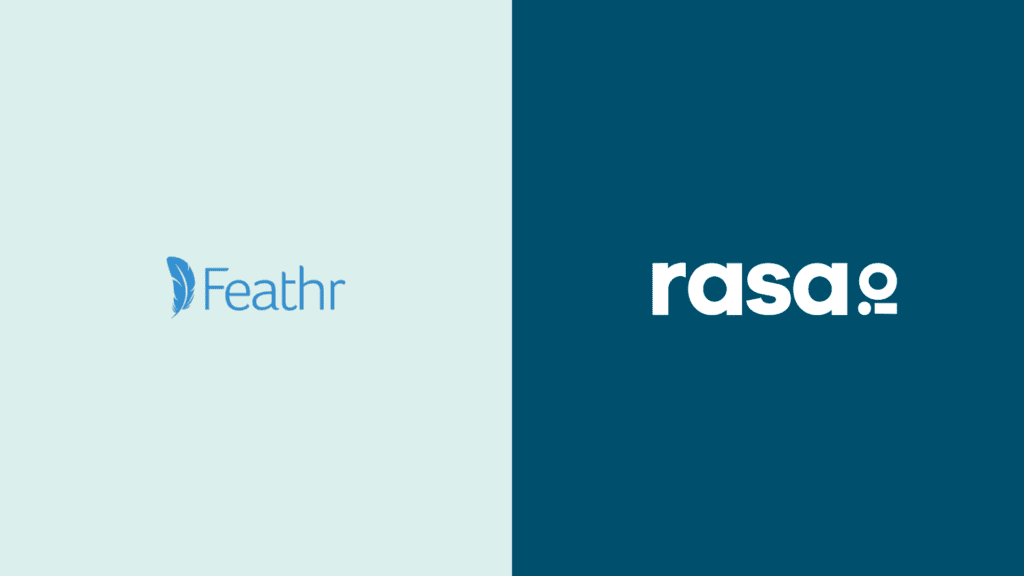Jay Acunzo
How a content marketer turned podcast producer took a very unique approach to engaging his email list. His trick? He doesn’t focus on grabbing audience attention like most marketers. He works to earn attention instead. This is Jay Acunzo’s story about pushing send.
Jay Acunzo is a sought after podcast and docuseries host/producer, a globally touring keynote speaker, and author of the book Break the Wheel. He runs Marketing Showrunners, a media company for people who want to find their voice, make a difference, and change the culture of their industries for the better.
Key Points From This Episode:
- Jay’s Damn the Best Practices newsletter, why he started it, and why it’s no longer around.
- Damn the Best Practices origin story and how Jay found his ‘tribe’ through it.
- Where Jay’s passion for creating and connecting comes from.
- Some of the writing tools and techniques that help Jay draft arresting newsletters.
- The only way Jay believes that you can grow your email list.
- Why Jay realized that the type of engagement was more important than list size.
- Jay’s tips for people struggling with their newsletter: Lean into the iterative process.
- Find out why email is the number one place for Jay to put his content.
- First, find out what you want to say before deciding where you want to say it.
- Jay’s ‘Unsolicited Response Rate’ metric and what it helps him measure.
- What Jay loves about his team and why they’ve succeeded together.
Tweetables:
“I fell in love with notion that I could make something early on that made me feel and that I could give it to someone else that made them feel too. And I just thought that was magic.” —@jayacunzo [0:05:53]
“We often blow the biggest opportunity to give people cause to stick around.” —@jayacunzo [0:07:20]
“There’s only one way your email list should be growing: The owner of that email opted in.” —@jayacunzo [0:11:07]
“If you can find a small audience and serve them deeply, you’re done.” — @jayacunzo [0:22:54]
Links Mentioned in Today’s Episode:
Episode Transcript
Jay:
Marketers tend to measure totals and what a great newsletter should do, it should create value and that should be the marketer’s mandate. It’s not about grabbing attention, it’s about holding it. It’s not about who arrives, it’s about who stays. And so if you just serve who stays, if you give people a reason to stay, two things happen. Number one is the way you approach your job has to change. There is no cheat or hack. You can’t trick your way into hours and hours of people’s lives. You have to create something that’s genuinely worth them choosing. But the second thing that happens is you build a foundation that allows you to go deeper with people that allows you to build anything you want. To me, that’s what we talk about when we talk about great marketing. Again, it’s not about who arrives, it’s about who stays.
Bryan:
For rasa.io, The free tool for sending smarter and better email newsletters. This is pushing send a show featuring people who send emails their subscribers actually want to read.
Bryan:
I’m Brian Kelly and on today’s show, how a content marketer turned podcast producer took a very unique approach to engaging his email list. Here’s Jay Acunzo talking with me about his first email newsletter called damn the best practices. I know you’ve published a couple of really fantastic newsletters over the years, but are you still sending one out called damn the best practices?
Jay:
No. So I kinda went on this two and a half year journey to explore things that were bugging me about the marketing world, namely why is there so much average content or commodity content and the culprit being in my diagnosis best practices. And so I wanted to dig into that concept cause that’s, that’s kind of an audacious almost ridiculous thing to say that best practices are a problem. So I went on that two and a half year journey where my newsletter actually named damn the best practices was a weekly attempt at making sense of things that I didn’t quite get. So I was kind of writing to understand less. So like writing to hand out answers I felt were fully baked. And that was a compliment to my podcast unthinkable. So between the two, I kind of used that journey I was on to aerate my ideas, pressure test them, get feedback, build community. And the culmination of that process was the book break the wheel. So once I’ve published break the wheel, I kind of looked back at the newsletter and I was like, I faced it, a choice, do I continue that or not? And so actually that newsletter has sunset.
Bryan:
Gotcha. So what was the origin story for damn the best practices. It was such a great newsletter for marketers.
Jay:
The first blog post that led to the creation of the newsletter was an article titled how to work in marketing when you’re bothered by suck. And it came from the conversation I had with a friend and I was lamenting the fact that I’d worked in marketing back then. I think it had been eight years and I’d yet to find a tribe. Like I always felt like I was shouting into the wind where I was like the tail wagging the dog. I thought there was a better way to do this. Content marketing stuff focused on quality, focused on the right growth, not manufactured growth. And he’s like, Oh, you’re bothered by suck. That’s why you haven’t like the people around. You either don’t see that or don’t care about that. And so you need to go find other people that are bothered by suck. And I just loved hearing that. And so I wrote the article and in the article I said, this is a flare I’m sending up. I feel like a lone penguin waddling in the winter and I’m just out on the ice alone. And if I can set up a flare, maybe some other penguins will waddle my way. Sure enough, I found some other penguins. I found some folks that were disillusioned by modern marketing who had come to appreciate the way that maybe I started to say things that everyone was thinking, but they weren’t willing to say out loud.
Bryan:
I felt the same exact way when reading it. So what was the response you were getting from people before you stopped?
Jay:
It was like something I just never experienced before. As a marketer, it wasn’t the usual comments of nice or thanks or this is great, you should read it. It wasn’t a simple retweet or a like I was getting like paragraphs upon paragraphs of people pouring out their soul to me. You know, we’d never met in person, but it was, you know, I remember one woman who said, Hey, thanks to these articles and she cited a couple that I wrote. I’ve been thinking about this side project for awhile. I’m so unhappy in my day job but I can’t leave for financial reasons. But now I’m writing this side blog and I’ve been doing it for three or four weeks and here’s a link to it and I’m doing it because of the things you were discussing. And she was like building on the ideas that I’d written about. And that was just like not the outlier at all. Every time I heard from people, I had a small audience, but they were really passionate. And so I got these just moments of deep gratitude and that that kind of switched my whole mentality of like I no longer care about reach. I always said I didn’t, but I really don’t now that I’ve seen the resonance possible if you do try to build a real community. So those emails were things that I just, I have saved somewhere. I’m keeping them private in between me cause it’s a one to one relationship there. But it was, it was profound. I gotta be honest.
Bryan:
a few moments ago you said, this is a flare I’m sending up. I feel like a lone penguin waddling in the winter. That’s super poetic. And I know you’re a writer first above anything else, but where do you think that comes from?
Jay:
I, I just, I fell in love with this notion that I could make early on that made me feel and then I could then give it to someone else that made them feel too. And I just thought that was magic. And I think part of being a professional creative is somebody at a young age said, wow, you’re really good at this. And I gave you the confidence to put in the reps and keep going because I do think all this stuff is learned. It’s about the reps. It’s about having a desire to be better each time out. But I think the difference between someone who does this stuff for a living and someone who does not, is the people who do it for a living are willing to show up even when they’re not feeling it, even when they know this is not going to be as good as my taste wants it to be. And so for me, maybe it came from being a young kid and having my parents and teachers say like, wow, you’re really good at this. And then I, you kind of perk up and say, Oh well I like being complimented. I like how it feels to be good at something, so I’ll keep pursuing it. So where did that come from? I have no one succinct answer, but I do think maybe it came from somebody saying maybe consider doing this more and that giving me the ability to do a lot of work. And I think that’s the only way to get good at any of this. You’re not gifted it, you just put out a lot of work.
Bryan:
Can you give me an example of how being a quote unquote writer and storyteller plays out when you go to draft the next email for your newsletter?
Jay:
Well, the thing is we often blow the biggest opportunity to give people cause to stick around, right? If the thesis here is the point of reading something, the point of creating a podcast, the point of creating a video isn’t just to get people to glance at it, it’s to get them to finish it, get them to the end. That’s like the golden rule. When you’re a writer, you think about how do you open, well, when you write a newsletter, maybe you don’t put a Roundup of housekeeping at the very beginning. Maybe you don’t put a little like selection of calls to action for other things you’re promoting at the beginning. I think we are so panicked today to try and get people to the actions we want them to take that we skip the part where we earned the right to ask them to do anything like we have to earn trust. We have to earn the excitement. Think of it as maybe revving them up to get to the point where they reach exit velocity that they want to go to the next thing, whether that’s the next bit of content or a demo of your product or some signing up for an event or whatever. So when you’re a writer, you have to think about, all right, well the very first thing they read has to be incredibly arresting. It has to say something of value. It has to also hint at the fact that there’s even more value coming up. And so as a writer you learn things like the nut graph, this packed little paragraph that you’ll start seeing, especially in news articles that somewhere near the top, like the first couple paragraphs that describes the newsworthiness, like the who, what, where, when, why. So as a writer, you think about how do I start and then how do I continue to purchase little moments of attention, get them to end. That is our golden rule and we forget that. And I think it really twists the final product.
Bryan:
When we come back. The only way Jay believes you should build an email list despite the most common temptations. Plus Jay shares mistakes he’s made along the way towards forming the special bond he now enjoys with his audience, so stick around. I’m Brian Kelly and you’re listening to Pushing Send from rasa.io.
rasa.io:
creating email newsletters takes a lot of time. You might curate articles, write content, tweak your template and look up metrics and not to mention, You’re probably doing all of this once a week. Well, at rasa.io we said enough and built a free tool to simplify the process which saves you time. It also uses AI to personalize emails for each subscriber based on their interests. That means they get stuff they like to read. Want to see how it works? Visit www.rasa.io and click how it works.
Bryan:
Welcome back to Pushing Send. I’m Bryan Kelly. When Jay Acunzo set out to publish his first email newsletter, it was initially very hard to put something out into the world with no one reading, but he recognized the key to building an engaged audience was to focus energy. On making an impact at a personal level with those early subscribers. Here’s what Jay had to say about this. When starting that first newsletter, what were some feelings you had?
Jay:
Well, here’s the thing. When you first start building your email list, there is nobody on the other end. And your temptation is to start adding people you know, to that list. And that is among the most egregious offenses I think you can commit as a marketer is like there’s only one way your email lists should be growing. It’s the owner of that email opted in. In other words, they consciously said, I would like to be on that email list. Full stop. End of story can add them cause you just email them one-on-one. You can’t add them because your friend can add them because you have LinkedIn connections and you see their email on LinkedIn. You can’t add them because it’s on their website. They put their email. Now the only way you can grow it is you have to do something worthy enough for them to saying, I’d like to hear from you again or on this cadence, this recurring basis. So here’s my email. And so I remember when I first started doing email, I would very predictably read about email marketing and there seemed to be this premium on the number of emails that you could grow and indeed and all the companies I worked for, we talk about the number of emails, the number of subscribers. And so I remember for a long, long time feeling like, why isn’t this growing more? And then when I started to get those email responses, I was like, aha, it doesn’t matter because look at the emotion I’m getting in reply like I’m building real relationships here. That’s what matters. It’s not the total that the number of people I’m sending it to. It’s the impact I’m having on a one to one basis.
Bryan:
It’s clear you put a lot into your emails. Do you ever feel apprehensive before pushing send?
Jay:
You know, I think having run several newsletters sometimes simultaneously since probably 2013, uh, not a week goes by that there’s not something I’ve put out into the world, be it over email or a blog or a podcast where I’m like, wow. In retrospect, I probably would have spent more time on that or done it differently. But that’s, that’s the thing, it’s, it’s the benefit of doing it all the time that makes you better. It’s like this duality we have to keep in our minds at the same time as marketers, I’d like to be great at this, but I have to take steps forward today so I’m not like hashtag ship it. End of story. I’m also not like hashtag perfection you need both. You need to aspire to perfection and be willing to ship today because if you aspire to be better and you keep putting out work, the desire you have to be good at this is going to supersede what a lot of people do, which is they just churn out crap and never get better. So for me, it’s fine. If I put something out in the world and I look back on it, I’m like not so great because what that tells me is now I’m better. I can recognize that it’s not so great. What’s where you get into danger zones is when you put out bad work or work that isn’t your best and you recognize it before you hit publish and the next time out you do nothing to be better.
Bryan:
What would you say to someone listening to this who’s struggling right now with wanting to produce a great email newsletter but just has to get it done and out the door?
Jay:
We talk a lot about email, just like we talk about podcasting, whatever. We talk about the container and we try to optimize the container and talk about how to distribute the container and approach the container. But the person on the receiving end, they care about what’s inside. So if your colloquial and writing as you and sign it with your headshot and a little signature, you embed and you have a strong tone of voice and a handle on your tone of voice and you address people as people and you goof up, guess what? You’re protected compared to a lot of people who just send quote unquote email. And when we lose sight of that, we also set ourselves up for failure because we don’t have the benefit of the doubt. If your buddy says, Hey, sorry about that, I fired that off too quick. You’re like, no big deal. But if the person who’s just like pelting you with a sales email or a promotional message or a glorified banner ad sent through, what happens to be an inbox instead of on a website? Yeah, you have a very razor thin level of trust and a very razor thin level of tolerance on the receiving end so that you feel like you have to be perfect. And I think this all speaks to this skittishness that I see in marketing where like we want to gather up all the right answers that we need to justify acting, but doing no kind of work in our domain works that way. Like zero creativity is the act of getting it perfectly right in theory and then hitting publish. All of creativity is trying stuff, seeing what works, getting a little bit better try and more stuff. That’s it. And so if you’re publishing content, if you’re writing a newsletter, if you’re putting out work into the world, look at it in the face and acknowledge what this is. It’s this iterative process. It can’t be, we’re getting it right from moment one because that’s not how this works.
Bryan:
You create content across many channels. How do you balance them in? Is one more important than the others?
Jay:
First is ironing out like who are we for, who are we not for? Have we discovered enough about the audience we aim to serve and how it overlaps with the content we want to create? Have we imbued that content with enough emotion and entertainment value and stories and are we saying things that are original, like those types of conversations to me supersede any channel. But once you figure that stuff out, for me, the most important place, like the pivot point around which the rest of our content goes is like the hub is email. It has to be, especially because we do podcasts and video shows and it’s very easy to publish on third parties that you do not own. And so what I tell marketers is there’s a difference between where you publish and what you promote. Like publish to YouTube if you do videos, fine because people could discover you there, but promote the fact both on YouTube and the things you tweet or whatever that Hey, if you want the good stuff come over to our email list. And so email to me is like the best thing that you actually run and control and own. So I’d have to say email is, is the number one place that we put our content
Bryan:
First you identify the audience you’re serving and the best way to serve them. Then you worry about picking channels to publish to afterwards. With email being the most ideal, right?
Jay:
We start by asking typically where should I be saying stuff and what we should be asking first is do I have anything to say? And once we figure out, Hey, I’m saying something that matters. And I found people that are very interested in that and some that are very not interested. I’m not caught in the middle like where some people are somewhat interested. That’s the land of selling commodities to the masses, which is a dying way to do business. Um, so once you have the thing you want to say, now you can decide where are we saying this? You know, you’d be hard pressed to find another place to put your worthy thoughts then than an email newsletter.
Bryan:
it feels like you’re driven by a gut and intuition, but it also seems like you value data. So are there any metrics you look at with your team and then use that data to determine what’s published through the email newsletter?
Jay:
If you don’t have an acronym, apparently it doesn’t exist for a metric for marketing. So I made up an acronym. It’s called the U R R unsolicited response rate. So if you put at the very end of your email, Hey, respond to give me your take on this specific question. Um, you know, who do you think should play the next Batman in the film? Like now you’re trying to like engineer an outcome, but if you give the best version of this email to someone and a few people respond with passion or they challenge you, they disagree with you. If there’s a very attached to any emotion you get, they’re very for it or very not for it. You’ve struck gold like you have found something meaningful to lean into and explore more and say more like you have a winning concept. So that’s what we use. We look at unsolicited response rates and then that informs like, wow, this idea of brand IP instead of making a quote unquote podcast or video show, people really took to that. We had a lot of good conversation. It challenged our thinking and we also got a lot of confirmation that it was the right approach. So you know what? We should probably go do a couple of podcast episodes about that or write some blog posts about that or in the keynote speech or the book, et cetera, et cetera. And so we don’t look at open rates, we don’t get click through rates. Like we’re not a transactional company. We’re a relationship company and we want to go deeper and broader. And so that’s what we’re looking for is like have we developed net new deep relationships, not net new relationships, not net new names in a database, but has there been actual interactivity with the audience? And I can tell you behind the scenes we actually have a scoring system for that and it’s changed our behavior in a great way because whereas before I would have responded to Sally saying something nice about this newsletter with like, wow, thank you Sally for subscribing. That means a lot. And that would have been it. Now that we’re actually looking for depth of relationship, I’m like saying that same thing and then I’m going like, Hey, um, do you have a show? Like is it working, you know, do you want to send it to me? I’ll review it. I’ll tell you one thing you do well that you can do more and one thing you might try that’s new. And just by measuring depth, we’re able to change our behavior to focus our time more. So that’s like really the only real quote unquote metric we use is is this kind of scoring system for measuring the depth of relationship and then looking at the response rate to ensure it’s there.
Bryan:
You’ve shared some really great perspectives and clearly the audience loves the work you publish now what can you specifically point to that’s allowed you and the team to realize all the successes you’ve had?
Jay:
What I like most about working with my team is that they are also disillusioned by most of marketing and they believe in the mission and they believe in understanding that like if you know your customer, if you know who you serve, if you spend an inordinate amount of time actually talking to them, and I think that’s where we go wrong in marketing is we don’t have a one to one agenda free conversations with those that we serve, but we all do at marketing showrunners on a monthly basis. We all talk to people in our audience. We do live meetups. We do one Oh one video calls for no other reason than it’s like, Hey, we want to know what you’re doing all day. What’s thinks about it and what questions do you have and you know how you try to solve those problems already. Maybe we can find a better way. That’s it. No agenda. We’re not trying to upsell you because we spend so much time on that. Not a single person on my team has ever been like good news boss. The open rate this month was 10 X, the open rate last month. Like, Hey, why don’t we AB test this subject line because we’re focused on the fundamentals and the rest really does take care of itself. I feel so profoundly grateful to work with a team that doesn’t get caught up in the vanity metrics. They just care about doing the right thing, which is serving a small audience better and if you can find a small audience and serve them deeply, you’re done. They get you more people, you find more insights that can win you over with new people. Like everything else actually does take care of itself, but we convince ourselves that, no, I’m in a big business. I have to move faster. I need new, new, new, more, more, more bigger, bigger, bigger. And that’s so profoundly not the case.
Bryan:
There you have it. It’s not rocket science and it’s fairly common knowledge that serving an audience better pays dividends. But unfortunately a story like Jay’s isn’t a common one in email marketing circles. The good news is this, that despite Jay’s uncommon approach, there are others doing amazing things with email too. Coming up on our next episode, we’ll hear from Josh Spector, a person who’s teaching others how to create and grow amazing email newsletters. You won’t want to miss what Josh has to say, so if you’re listening to Pushing Send for the first time, be sure to subscribe at Apple podcasts or wherever you’re listening so you don’t miss an episode. And if you’ve enjoyed what you heard, I’d encourage you to check out a few other episodes while you’re here. Lastly, leaving a review will help us share these stories with others like you. Thanks in advance for doing that. I’m Bryan Kelly, and you’ve been listening to Pushing Send from rasa.io















